Hunting is not only fun, it’s fulfilling to be able to provide meat for your family and loved ones. However, taking the animal should not be the only goal.
A hunter should always make every effort to kill the animal with a single shot, one that results in as quick a demise as possible.
So, how can you know where to shoot a deer so that you can accomplish this? Well, a hunter needs to be well-versed in deer anatomy, so that the animal can be taken with as little suffering as possible.
Where you shoot a whitetail (or mule deer) could be the difference between a clean, ethical kill and a wounded, suffering animal.
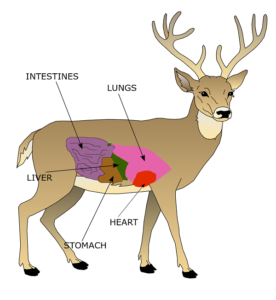
A deer’s vitals include the heart, lungs, stomach, liver and intestines. But where is the best place to shoot a whitetail? Read on!
Where To Shoot A Deer
The definition of what an “ethical shot” is when hunting deer has been an oft debated topic. Whatever your definition may be, a shot that presents the opportunity for the quickest and most humane (and legal) kill should be utilized.
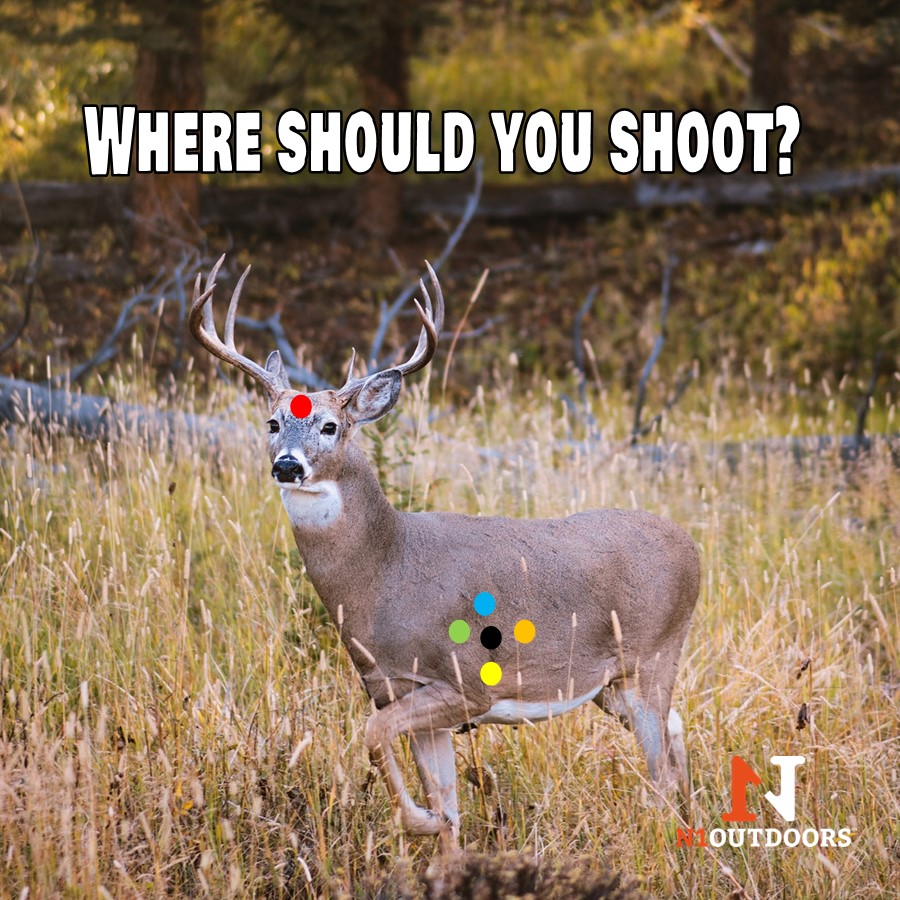
Taking into account the position of the deer in this photo, where would you shoot this whitetail? And, which would be the best shot to take?
It’s easy for excitement to give way to poor shot selection when hunting (especially when shooting at long range). Unfortunately, this often leads to the wounding of an animal, resulting in unnecessary suffering.
So, where is the kill zone on a deer? The following are locations of a deer’s anatomy, that if properly executed, will result in an effective kill.
The Heart Shot
Simply put, a heart shot on a deer is lethal. However, while it will result in the death of a whitetail, it does not necessarily always provide the best blood trails. When the heart is hit, the flow of blood decreases and may result in less of a blood trail than you were hoping for.
bullet or broadhead that penetrates the heart often pierces the lungs as well, which is beneficial to ensuring a quick recovery of the animal.
When taking a heart shot, it’s good to be sure that the caliber of bullet you are using is sufficient to penetrate the shoulder blade and ensure a clean kill. The downside to a larger bullet is it can result in a larger amount of unusable meat upon processing.
The Lung Shot
The lungs provide a large target for rifle hunters and bowhunters alike. While a bullet can enter the lungs of a deer and exit, shooting its lungs with a broadhead will make it difficult for the deer to breathe. Usually, that difficulty breathing will keep it from being able to run too far after the shot.
Sometimes, however, simply clipping a lung or not having a complete pass-through shot can result in poor blood trails, making the deer more difficult to track.
A lung shot with a bow is often as effective as a heart shot. Just aim for the middle of the lung area. A well-placed lung shot will cause the deer to suffocate to death. However, a lung-shot attempt that hits too far back may only pierce the liver, which can result in a much slower death and more difficult to track animal.
The Neck Shot
You can drop a deer with one shot if the spinal cord is severed. A neck shot that severs the arteries in the large arteries in the neck can be particularly bloody and lethal. But, while a lethal neck shot causes little damage to the meat of the animal, if the spine is not severed, it could be difficult to recover and it may even survive.
While a neck shot can be a risky shot with a gun, it’s simply a very poor shot to take if you’re a bowhunter.
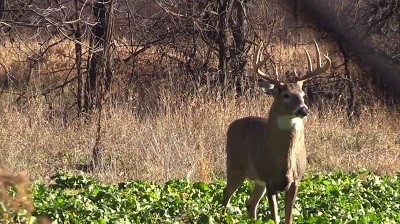
The angle of the shot should be taken into account when deciding where to shoot a deer.
The Brain Shot
If it is well executed, a brain shot will drop a deer immediately. When you put a bullet through the brain, it will disrupt the life functions of the deer and it will lose consciousness immediately. This shot results in no loss of meat, but is a very difficult shot to make, due to the small target area.
If the shot is not accurate, it can result in unnecessary suffering of the deer and you may not be able to recover the animal.
Deer Anatomy | The Rest Of The Story
While we’ve covered various parts of a whitetail’s anatomy that can be aimed for during a hunt to result in a kill, it’s also good to be well-versed in the rest of a deer’s anatomy, so you can become a more well-rounded and knowledgeable hunter.
Wait, a deer has how many stomachs? Well, just one… sort of. Read on…
-
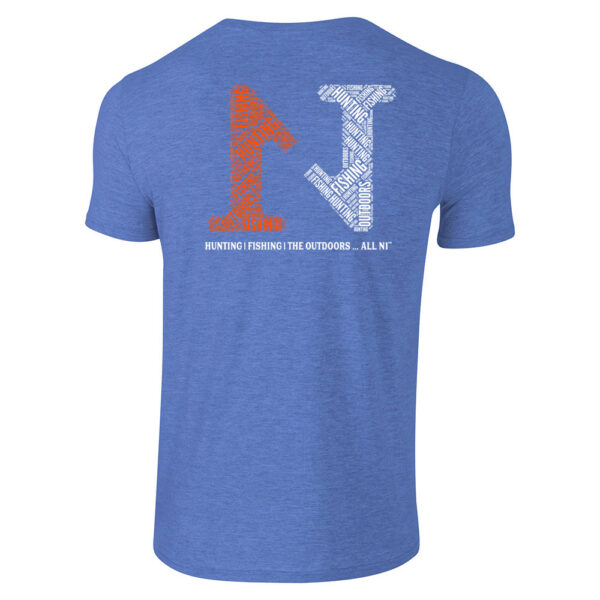
N1 Outdoors® Word Cloud Tee (Heather Royal)
Price range: $22.99 through $28.99 Select options This product has multiple variants. The options may be chosen on the product page -
Sale!
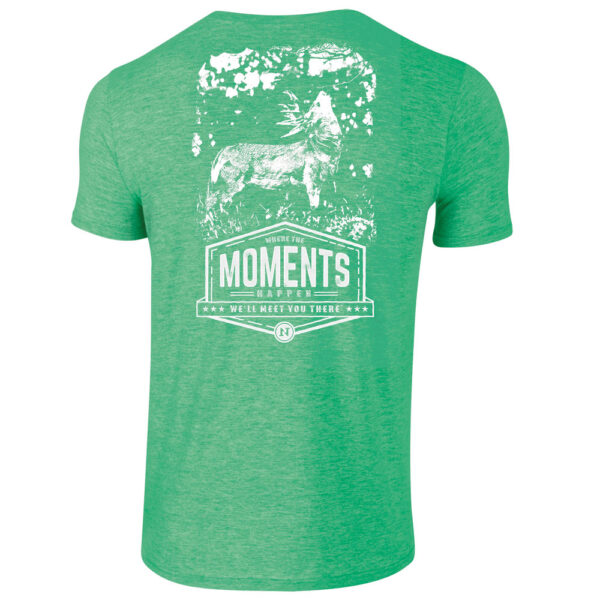
N1 Outdoors® N1 Moments™ Licking Branch Buck SS Tee
$5.00 Select options This product has multiple variants. The options may be chosen on the product page -
Sale!
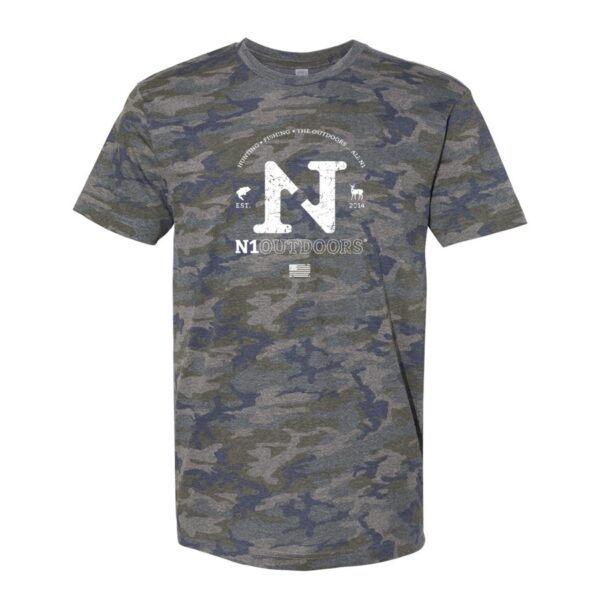
N1 Outdoors® Est. 2014 Vintage Camo USA Tee
$15.00 Select options This product has multiple variants. The options may be chosen on the product page
The Whitetail Digestive System
All deer species have a four-chamber stomach. The four chambers are called the rumen, reticulum, omasum and abomasum. Deer are able to consume large amounts of food in a relatively short period of time. That food is swallowed and passed to the first stomach, which is known as the rumen.
The digestive bacteria in the rumen begins to break down the cellulose found in the plant life that the deer has consumed. However, the rumen cannot completely break down and absorb all the necessary nutrients, so the deer will regurgitate the food later and chew it again. This is often referred to as the deer “chewing its cud.” This allows the deer to further break down the food, so it can absorb the nutrients it needs.
Once the food is chewed the second time, it moves to the reticulum, which serves as a strainer of sorts. Foods that are more difficult to digest will remain in the rumen and reticulum chambers for a longer period of time. This can cause a “roadblock” of sorts and can lead to malnutrition and sometimes even death, all while having a “full stomach.”
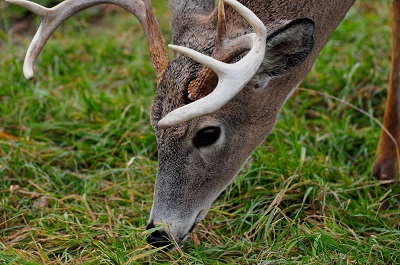
A deer has four different chambers of the stomach, each with a different role in food digestion.
After a period of about 16 hours, the food will pass from the reticulum to the omasum. In the omasum, the water from the food is absorbed. The food then passes to the abomasum, which produces acid that further breaks down the food that the deer has eaten.
After leaving the abomasum, the remaining food particles and liquid are passed to the deer’s intestines, where it will eventually exit the body as feces and urine. Whitetail typically defacate an average of 13 times per day.
Legs
It’s sometimes hard to believe how a whitetail’s skinny legs can produce so much speed and power.
While whitetail cannot maintain top speed for long distances, they can run up to 40 miles per hour in short bursts.
With the use of their hooves, they are able to make sharp turns and pivots, even at high speeds. Their hind legs provide the power for their speed and jumping ability. In fact, deer are also good swimmers.
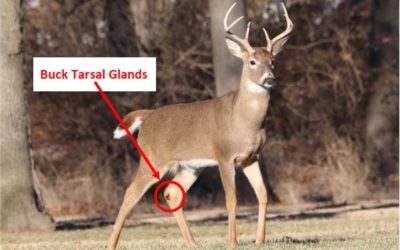
A whitetail buck has tarsal glands on the inside of its hind legs.
Whitetail bucks have tarsal glands on the inside of their hind legs. These glands secrete a musky scent unique to that individual deer. The buck will urinate on the glands and leave the scent in areas that it paws out on the ground, called scrapes.
Other male and female deer visit these scrapes to check scent. During the breeding season, or “rut”, bucks will scent check scrapes to identify what female does may be in the area or what intruder buck might be in his territory.
Not all hunters are after antlers, but it’s certainly a nice bonus when you are able to harvest a trophy. So how fast can those antlers actually grow? Read on…
Antlers
Male deer have antlers on top of their head as part of their anatomy. Although rare, it is also possible for a doe to grow antlers occasionally.
A whitetail’s antlers are actually live tissue that are composed of bone. A deer’s antlers hold the distinction of having the fastest growing tissue of all animals.
Whitetails begin growing their antlers in the Spring and they can grow at an average rate of up to two inches per week!
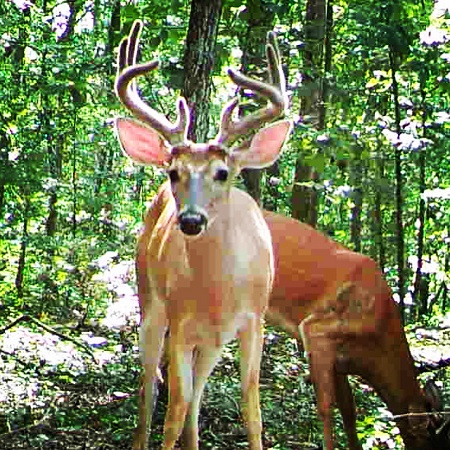
A whitetail’s antlers can grow at an average of up to 2 inches per week!
During development, the antlers are covered with a spongy tissue called velvet. The velvet contains blood vessels that generate growth of the antlers.
Antler growth typically stops in late Summer to early Fall. Once growth stops, the deer will remove the velvet from their antlers by rubbing them on the bases of trees.
After the breeding season ends, bucks will shed their antlers. Shed times can vary in different parts of the country, but typically take place between January and March.
Whitetail Ears And Hearing
A deer has hearing that is far superior to human hearing. This serves a whitetail well in identifying danger in the form of humans and other predators.
Muscles attached to the whitetail’s ears allow it to rotate them and hear in multiple directions without having to move its head.
This helps it to determine which direction the sound or is coming from and possibly even how far away the sound is. This part of a deer’s anatomy plays a critical role in its survival.
Eyesight… “All Around” Vision
You may have heard the saying that someone has “eyes in the back of their head.” A deer of course does not have those, but because its eyes’ location on the sides of its head, it does in fact, have a 310-degree field of vision. Almost as good as eyes in the back of the head!
Although it is hard for deer to focus on one object, their excellent vision helps them see clearly in the night-time hours.
-
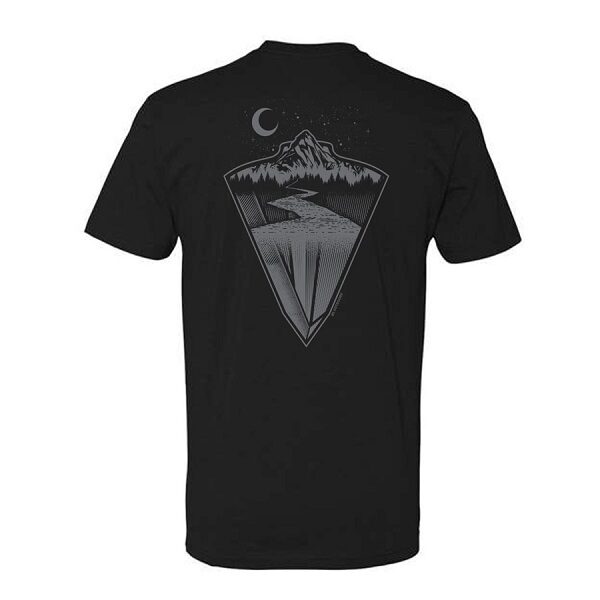
“Edge of the Outdoors™” Tee featuring Tuffhead Evolution Broadhead (Various)
Price range: $24.99 through $28.99 Select options This product has multiple variants. The options may be chosen on the product page -
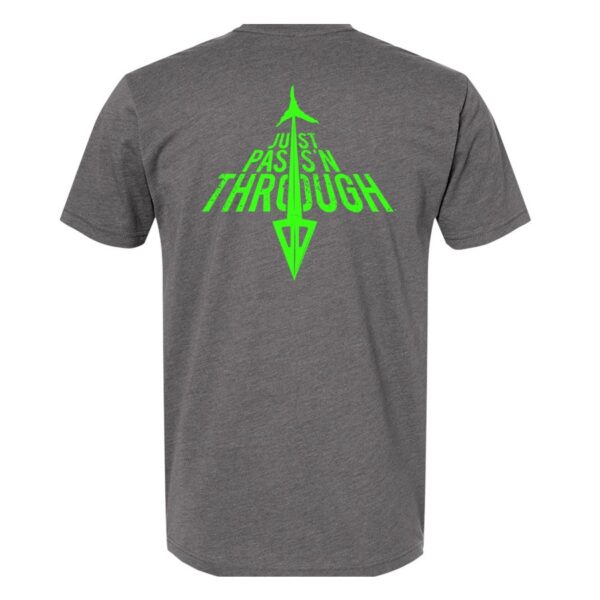
N1 Outdoors® Just Pass’N Through™ Bowhunting Tee
Price range: $24.99 through $28.99 Select options This product has multiple variants. The options may be chosen on the product page -

N1 Outdoors® Angry Arrow™ Tee
Price range: $24.99 through $28.99 Select options This product has multiple variants. The options may be chosen on the product page
Smell
A whitetail’s excellent sense of smell is one of its best defense mechanisms. A deer will lick its nose to make it moist. This allows it to “capture” odor particles that are carried by the wind and that stick to the deer’s nose. This not only helps a deer identify danger, but also plays a huge part in the breeding process.
Both male and female deer leave scent behind via urine and various scent glands. Among other things, a whitetail’s incredible sense of smell allows a buck to know when a doe is ready to breed, or when an intruder buck is in the area.
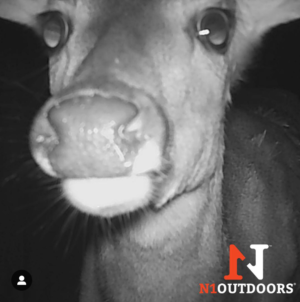
A deer’s nose is its best defense mechanism.
Conclusion
It’s very important to not only be familiar with deer anatomy as a hunter, it’s just as important to know what your limitations are with the weapon you are hunting with.
Is the weapon going to be effective in producing a clean kill? Is your skill level such that you can safely and accurately make an ethical shot? Practice. Practice. And practice!
If you pair knowledge of deer anatomy with skill and patience, success is on the horizon!
(For more information, you can also check out our whitetail hunting tips. You can also learn about piebald deer.)

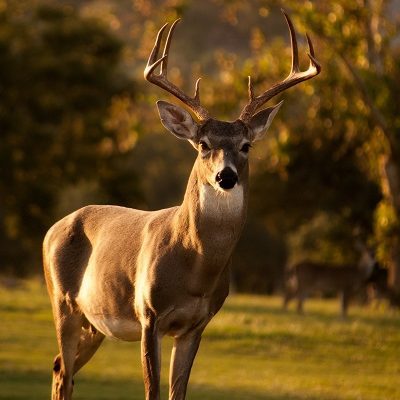



To be a good hunter is to act like you are being hunted